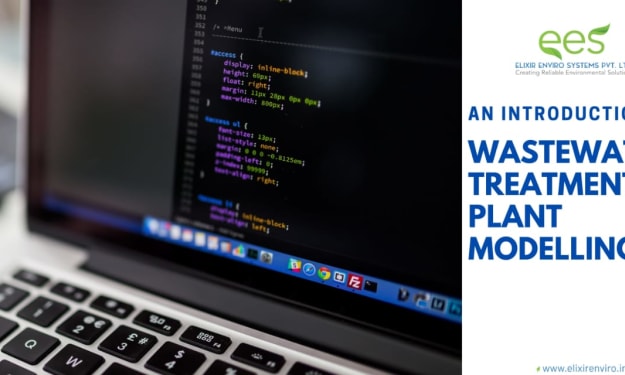
Water Pollution:
Water pollution occurs when harmful substances, pollutants, or contaminants are introduced into water bodies, degrading their quality and making them unfit for specific uses. The sources of water pollution can be categorized into point sources, such as industrial discharge pipes, and non-point sources, including agricultural runoff and urban stormwater.
Industrial Activities: Industries can release various pollutants into water bodies, including heavy metals, chemicals, and toxins. Improper waste disposal, inadequate wastewater treatment, and accidental spills contribute to water pollution. Industrial discharges can have severe impacts on aquatic ecosystems and pose risks to human health if contaminated water is consumed or used for irrigation.
Agricultural Runoff: The use of fertilizers, pesticides, and herbicides in agriculture can result in runoff, carrying these chemicals into nearby water bodies. Excessive nutrient runoff, particularly nitrogen and phosphorus, can cause eutrophication, leading to oxygen depletion, harmful algal blooms, and the death of aquatic organisms.
Urbanization and Stormwater Runoff: Urban areas generate significant amounts of pollutants, such as oil, heavy metals, sediments, and chemicals, through activities like construction, transportation, and improper waste management. When it rains, stormwater runoff carries these pollutants into water bodies, degrading water quality and posing risks to aquatic ecosystems and human health.
Sewage and Wastewater: Insufficient or inadequate wastewater treatment can result in the discharge of untreated or partially treated sewage into water bodies. Pathogens, nutrients, and organic matter in untreated sewage can lead to the contamination of water sources, making them unsafe for drinking and recreational purposes.
Challenges in Water Quality Management:
Inadequate Infrastructure: Many regions, especially in developing countries, lack proper water treatment infrastructure. Limited access to safe drinking water and inadequate sanitation facilities contribute to waterborne diseases and compromised water quality.
Population Growth and Urbanization: Rapid population growth and urbanization place additional pressure on water resources and increase the risk of water pollution. Expanding cities and inadequate urban planning often lead to inadequate wastewater management and increased pollution from industrial and domestic sources.
Climate Change: Climate change impacts water quality through altered precipitation patterns, increased frequency of extreme weather events, and rising temperatures. These changes can affect water availability, increase runoff and erosion, and exacerbate water pollution issues, such as the release of pollutants from thawing permafrost or saltwater intrusion into freshwater sources.
Agricultural Practices: Intensive agricultural practices, including excessive use of fertilizers and pesticides, contribute to water pollution. Encouraging sustainable agricultural practices, precision farming techniques, and proper management of irrigation systems can help reduce agricultural runoff and protect water quality.
Non-Point Source Pollution: Addressing non-point source pollution, which comes from diffuse sources like agricultural runoff and urban stormwater, poses a significant challenge. Controlling and mitigating pollution from these sources requires widespread adoption of best management practices, proper land use planning, and the implementation of green infrastructure.
Transboundary Water Pollution: Many water bodies cross national boundaries, making water quality management complex. Cooperation between countries is necessary to address shared water pollution issues, develop joint monitoring and management strategies, and establish effective legal frameworks.
Addressing Water Quality Challenges:
Wastewater Treatment: Expanding access to proper wastewater treatment facilities is crucial. Governments and international organizations should invest in wastewater treatment infrastructure, promote the use of appropriate technologies, and enforce stringent regulations to ensure the safe discharge of treated wastewater into water bodies.
mproving water quality is a complex task that requires a combination of efforts from governments, communities, industries, and individuals. Here are several key strategies that can contribute to enhancing water quality:
Strengthening Water Treatment Infrastructure: Governments should invest in the development and maintenance of robust water treatment facilities. This includes upgrading existing infrastructure, expanding coverage to underserved areas, and implementing advanced treatment technologies to remove contaminants effectively.
Implementing Strict Regulations: Governments need to establish and enforce stringent regulations to prevent pollution from point sources, such as industrial discharges and sewage treatment plants. These regulations should include effluent standards, monitoring requirements, and penalties for non-compliance. Regular inspections and audits can ensure compliance with the regulations.
Promoting Sustainable Agriculture Practices: Encouraging farmers to adopt sustainable agricultural practices can significantly reduce water pollution from agricultural runoff. This includes promoting precision farming techniques, optimizing fertilizer and pesticide use, implementing soil conservation measures, and adopting water-efficient irrigation methods.
Managing Stormwater Runoff: Urban areas can implement green infrastructure solutions to manage stormwater runoff effectively. This includes the use of permeable pavements, rain gardens, bioswales, and retention ponds to capture and treat stormwater before it enters water bodies. Proper maintenance of stormwater management systems is also crucial.
Protecting Riparian Zones and Wetlands: Riparian zones and wetlands play a vital role in filtering and purifying water. Governments and communities should protect these areas by implementing buffer zones and conservation measures. Restoration efforts can also help revive and expand these critical habitats, enhancing their capacity to improve water quality.
Encouraging Responsible Industrial Practices: Industries should be encouraged to adopt sustainable and environmentally friendly practices. This includes minimizing the use of hazardous chemicals, implementing efficient waste management systems, and investing in pollution prevention technologies. Industries can also explore opportunities for water reuse and recycling to minimize water consumption.
Strengthening Monitoring and Enforcement: Regular monitoring of water quality is crucial to identifying pollution sources and assessing the effectiveness of pollution control measures. Governments should invest in monitoring infrastructure and ensure that data is readily available to the public. Effective enforcement of regulations and prompt response to violations are essential to deterring pollution.
Enhancing Public Awareness and Education: Raising public awareness about the importance of water quality and the impacts of pollution is essential. Educational campaigns can inform communities about sustainable water management practices, water conservation, and the proper disposal of waste. Empowering individuals to take responsibility for their actions and make informed choices can lead to significant improvements in water quality.
Strengthening International Cooperation: Many water bodies cross national boundaries, necessitating international collaboration to address water pollution effectively. Countries should cooperate in sharing data, best practices, and research findings. Agreements and frameworks for transboundary water management should be developed to facilitate cooperation and resolve conflicts.
Investing in Research and Innovation: Continued research and development efforts are crucial to developing innovative solutions for water quality improvement. This includes advancements in water treatment technologies, pollution monitoring techniques, and sustainable water management practices. Governments, research institutions, and industries should collaborate to support and fund research initiatives.
Encouraging Community Participation: Engaging local communities in water quality improvement efforts is vital. Community-based initiatives, such as watershed protection programs and citizen science projects, can raise awareness, foster a sense of ownership, and mobilize action at the grassroots level.
In conclusion, improving water quality requires a comprehensive and collaborative approach. Strengthening water treatment infrastructure, implementing strict regulations, promoting sustainable agriculture practices, managing stormwater runoff, protecting riparian zones, encouraging responsible industrial practices, monitoring and enforcing regulations, enhancing public awareness, fostering international cooperation, investing in research and innovation, and encouraging community participation are crucial steps towards achieving cleaner and healthier water sources globally.
About the Creator
Enjoyed the story? Support the Creator.
Subscribe for free to receive all their stories in your feed. You could also pledge your support or give them a one-off tip, letting them know you appreciate their work.





Comments
There are no comments for this story
Be the first to respond and start the conversation.